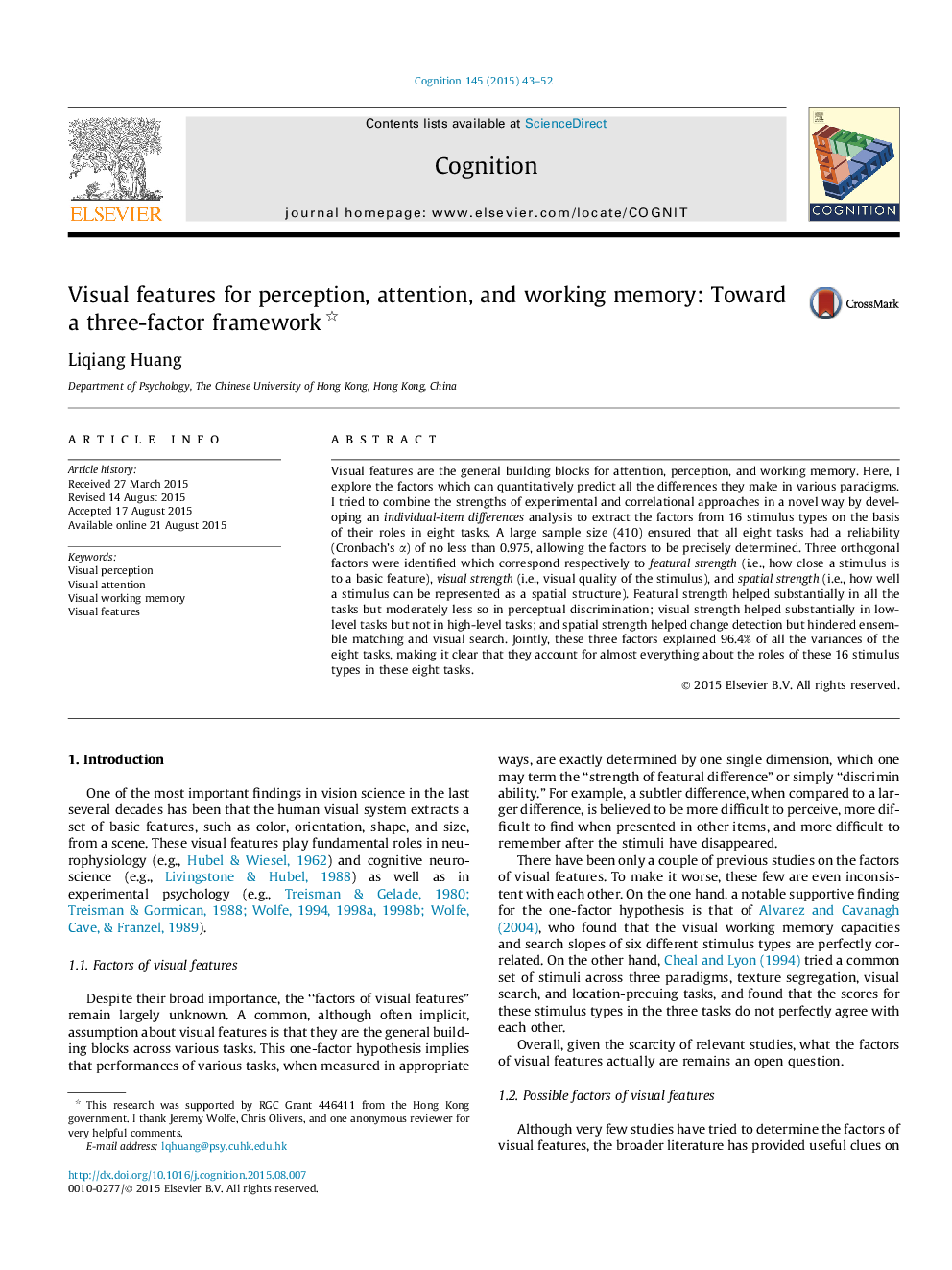| Article ID | Journal | Published Year | Pages | File Type |
|---|---|---|---|---|
| 7286546 | Cognition | 2015 | 10 Pages |
Abstract
Visual features are the general building blocks for attention, perception, and working memory. Here, I explore the factors which can quantitatively predict all the differences they make in various paradigms. I tried to combine the strengths of experimental and correlational approaches in a novel way by developing an individual-item differences analysis to extract the factors from 16 stimulus types on the basis of their roles in eight tasks. A large sample size (410) ensured that all eight tasks had a reliability (Cronbach's α) of no less than 0.975, allowing the factors to be precisely determined. Three orthogonal factors were identified which correspond respectively to featural strength (i.e., how close a stimulus is to a basic feature), visual strength (i.e., visual quality of the stimulus), and spatial strength (i.e., how well a stimulus can be represented as a spatial structure). Featural strength helped substantially in all the tasks but moderately less so in perceptual discrimination; visual strength helped substantially in low-level tasks but not in high-level tasks; and spatial strength helped change detection but hindered ensemble matching and visual search. Jointly, these three factors explained 96.4% of all the variances of the eight tasks, making it clear that they account for almost everything about the roles of these 16 stimulus types in these eight tasks.
Related Topics
Life Sciences
Neuroscience
Cognitive Neuroscience
Authors
Liqiang Huang,
